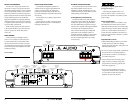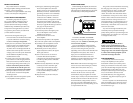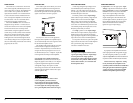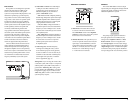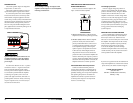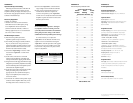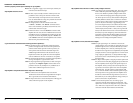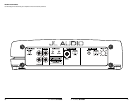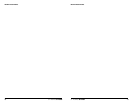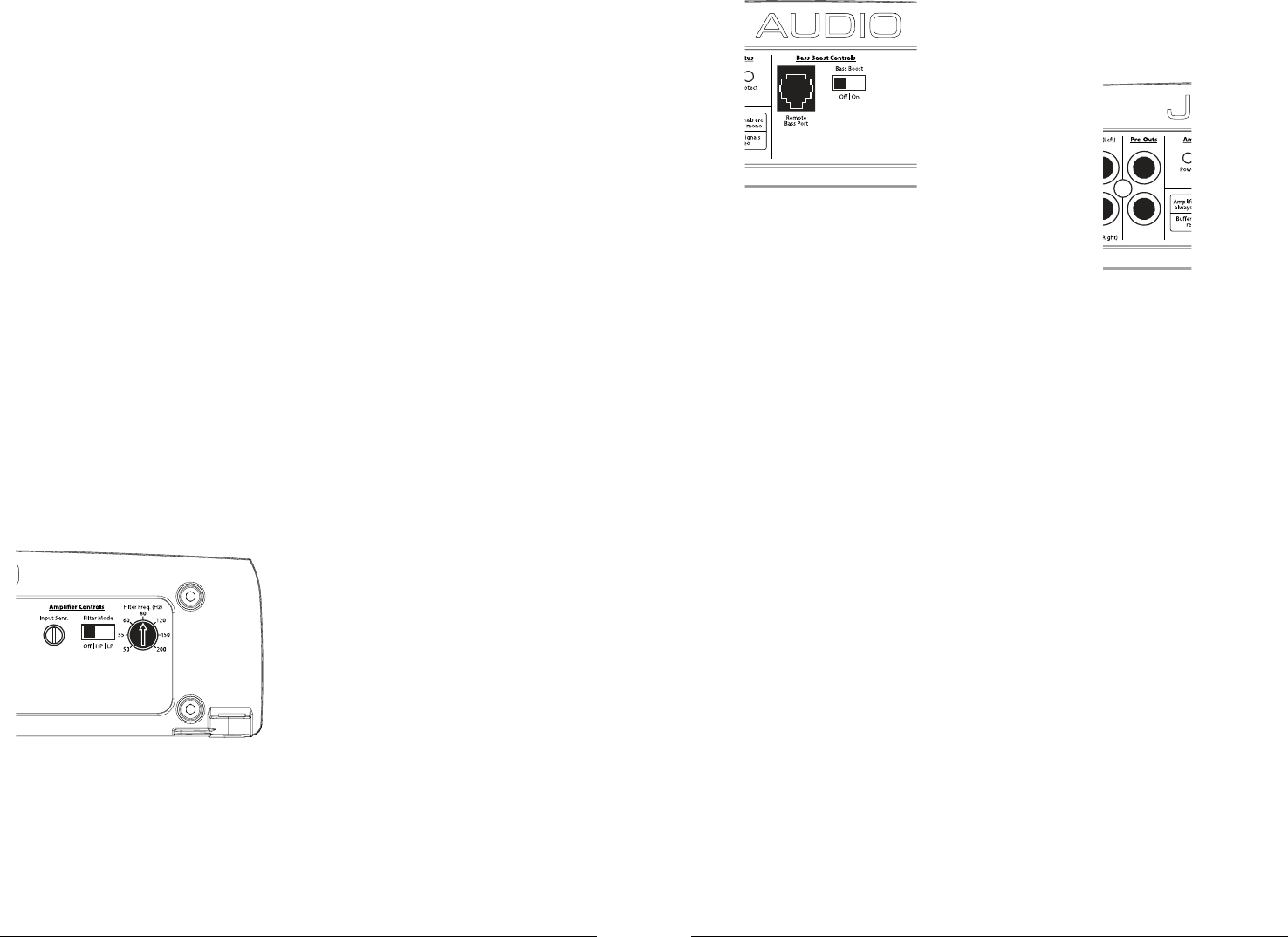
BASS BOOST CONTROLS
1) “Bass Boost”: This switch allows the user
to activate a 6 dB boost centered at 48 Hz.
The “Filter Mode” switch in the “Amplifier
Controls” section must be in the “LP” position
for the bass boost to be functional.
2) “Remote Bass Port”: This port allows you to
connect an optional remote boost knob (sold
separately, JL Audio Model RBC-1) that can
be mounted in the front of the vehicle. With
the RBC-1 connected, the boost is no longer
limited to 0 or +6 dB, allowing a range of
0 - 12 dB of boost to be selected.
PREOUTS
The G1300’s “Pre-Outs” connectors output
unprocessed (pass-through) left and right channel
preamp level signals, permitting connection of
additional amplifiers in a system.
The preamp output signals are identical to
the input signals and are not affected by any
settings in the “Amplifier Controls” or “Bass
Boost Controls” sections. The signal level of
the “Preamp Output” is line-level (low voltage),
regardless of the position selected via the G1300’s
“Input Voltage” switch. An additional amplifier
connected to these preamp outputs should have
its input voltage switch set to the “Low“ position.
Filter Controls
Most speakers are not designed to reproduce
the full range of frequencies audible by the
human ear. For this reason, most speaker
systems are comprised of multiple speakers, each
dedicated to reproducing a specific frequency
range. Filters are used to select which frequency
range is sent to each section of a speaker system.
The division of frequency ranges to different
speakers can be done with passive filters (coils
and/or capacitors between the amplifier outputs
and the speakers), which are acceptable and
commonly used for filtering between mid-
range speakers and tweeters. Filtering between
subwoofer systems and satellite speaker systems
is best done with active filters, which cut off
frequency content at the input to the amplifier.
Active filters are more stable than passive filters
and do not introduce extraneous resistance,
which can degrade subwoofer performance.
The active filter built into the G1300 can be
used to eliminate potentially harmful and/or
undesired frequencies from making their way
through the amplifier section to the speaker(s).
This serves to improve tonal balance and to avoid
distortion and possible speaker failure. Correct
use of this filter can substantially increase the
longevity and fidelity of your audio system.
2) “Filter Mode” Control: The G1300 employs
a 12dB per octave filter. This filter can be
configured into one of two filter types or
defeated completely by way of the three-
position “Filter Mode” switch:
“Off ”: Defeats the filter completely, allowing
the full range of frequencies present at the inputs
to feed the amplifier. This is useful for systems
utilizing outboard crossovers or requiring full-
range reproduction from the G1300.
“LP” (Low-Pass): Configures the filter to
attenuate frequencies above the selected filter
frequency at a rate of 12dB per octave. Useful
for connection of subwoofer(s) to the G1300 in
a bi-amplified system.
“HP” (High-Pass): Configures the filter to
attenuate frequencies below the selected filter
frequency at a rate of 12dB per octave. Useful
for connection of a coaxial or component
satellite speaker system to the G1300 in a
bi-amplified system.
3) “Filter Freq. (Hz)” The filter frequency
markings surrounding this rotary control
are for reference purposes and are generally
accurate to within 1/3 octave or better. If you
would like to select the filter cutoff frequency
with a higher level of precision, consult the
chart in Appendix B (page 13).
Tuning Hint: If you are using the G1300 to drive
a subwoofer system (“LP” mode) or a component
satellite speaker system (“HP” mode), 80 Hz is a
good baseline “Filter Freq. (Hz)” setting. After
properly adjusting the “Input Sens.”, as outlined
in Appendix A (page 12), you can fine tune the
“Filter Freq. (Hz)” control to achieve the desired
system frequency response.
8 JL AUDIO G1300 JL AUDIO G1300 9




